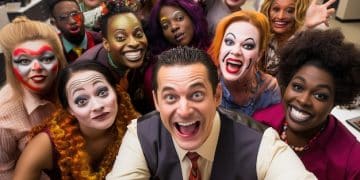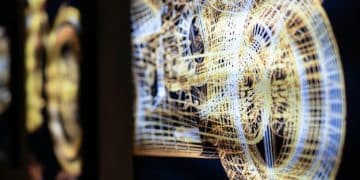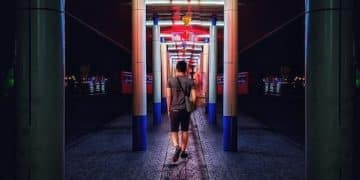Entertainment Article – entertainm_gazetamagazinecom_2_1753888335_c5b4e5c3_the_art_of.html
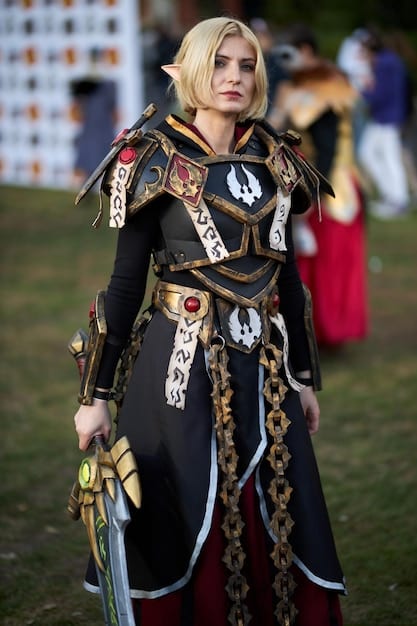
The art of cosplay is a vibrant, multifaceted cultural phenomenon where individuals transform into characters from various fictional realms, blending intricate craftsmanship with passionate performance to create living tributes that resonate with global audiences.
The Art of Cosplay: Transforming Passion into Performance is far more than just “dressing up”; it is an intricate dance of creativity, dedication, and community. This global phenomenon allows enthusiasts to embody beloved characters, bridging the gap between fiction and reality through meticulous craft and vibrant expression. Through this guide, we explore the depth and dedication behind each costume and portrayal.
The Evolution of Cosplay: From Niche Hobby to Global Spectacle
Cosplay, a portmanteau of “costume play,” has journeyed from its humble beginnings as a niche hobby to become a global cultural spectacle. What started within the confines of science fiction conventions in the mid-20th century has blossomed into a mainstream art form, celebrated at major events worldwide.
Initially, fans created simple costumes to express their admiration for characters from books, films, and television shows. These early attempts often involved practical, homemade elements, reflecting the limited resources and widespread understanding of costume creation at the time. Early Star Trek conventions, for example, saw attendees donning homemade uniforms, driven purely by a desire to connect with the fictional world.
The Japanese Influence and Explosion of Anime/Manga
The term “cosplay” itself was coined by Japanese journalist Nobuyuki Takahashi in 1984, after he attended the World Science Fiction Convention in Los Angeles. He was inspired by the elaborate costumes and imported the concept back to Japan, where it quickly fused with the burgeoning popularity of anime, manga, and video games. This confluence sparked an exponential growth in the hobby, pushing boundaries of intricate design and character accuracy.
- 📈 Anime and manga provided a rich tapestry of visual inspiration.
- 🎨 Japanese craftsmanship elevated costume detail to new heights.
- 🌐 Internet facilitated character design sharing and global community building.
The internet played a pivotal role in this expansion, allowing cosplayers from different corners of the world to share their creations, learn new techniques, and connect with like-minded individuals. Online forums, image-sharing platforms, and eventually social media became vital tools for the exchange of ideas and inspiration, further fueling the global interest. This cross-cultural exchange fostered a competitive yet supportive environment where craftsmanship continually improved, and new interpretations flourished.
Today, cosplay is an integral part of major pop culture conventions such as Comic-Con International, PAX, and countless anime expos. These events showcase the immense talent and dedication of cosplayers, who often spend hundreds of hours and significant resources perfecting their chosen characters. The presence of professional cosplayers, sponsored by brands and recognized as artists, further underscores its status as a serious and respected art form, transforming passion into performance on a grand scale.
Crafting the Character: The Artistry Behind Cosplay Costumes
At the heart of cosplay lies the incredible artistry involved in crafting the character. It is a meticulous process that combines various disciplines, from fashion design and tailoring to prop making and theatrical makeup. The goal is to accurately replicate a character’s appearance, often down to the smallest detail, requiring both technical skill and creative problem-solving.
The journey often begins with extensive research into the character’s design. This involves studying reference images, concept art, and animated sequences to understand fabric textures, color palettes, and structural elements. Cosplayers often spend hours analyzing costume pieces to determine the best materials and construction methods, aiming for authenticity while also considering wearability and movement.
Material Selection and Fabrication Techniques
Material selection is critical to achieving the desired look and feel. Cosplayers work with an astonishing array of textiles, thermoplastics, foams, and resins. Each material offers unique properties that are leveraged to create different effects, from the flowing drapery of a fantasy gown to the rigid lines of futuristic armor.
- ✂️ **Sewing and Tailoring:** Mastering sewing techniques is fundamental for fabricating garments that fit well and accurately reflect the character’s attire.
- 🛠️ **Prop Making:** From swords to staff, props are often handmade using materials like EVA foam, PVC pipes, and Worbla, requiring sculpting, sanding, and painting skills.
- 🎨 **Wig Styling and Makeup:** Wigs are intricately styled to match character hairstyles, and theatrical makeup is used to alter facial features, add special effects, or enhance character resemblance.
The fabrication phase is where vision meets reality. This can involve complex pattern drafting, intricate embroidery, 3D printing of small components, and detailed painting to create weathered or metallic effects. Many cosplayers learn new skills specifically for a project, demonstrating the continuous learning and adaptability that the hobby demands. This iterative process of creation, testing, and refining ensures that the final product is as close to the source material as possible, embodying the character’s essence.
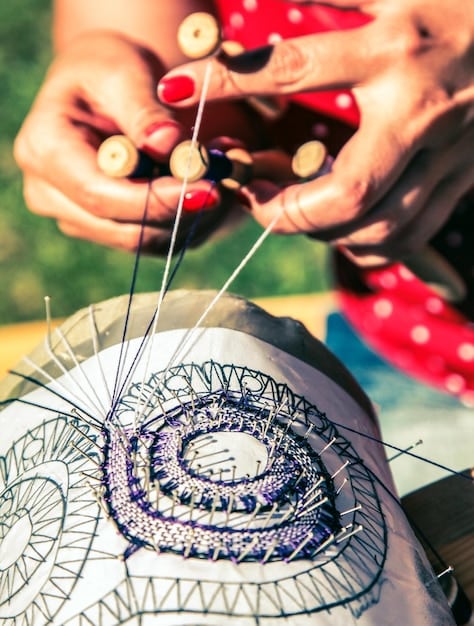
Beyond the technical aspects, there’s an inherent problem-solving component in costume creation. Cosplayers frequently encounter challenges in translating two-dimensional designs into wearable, three-dimensional outfits, often needing to innovate solutions for difficult shapes or materials. This blend of technical skill and inventive spirit is what truly defines the artistry involved in bringing a character’s costume to life, pushing the boundaries of what is possible with fabric and foam.
Embodying the Spirit: Performance and Character Portrayal
While the costume is the visible manifestation of a character, the true magic of cosplay lies in the performance and character portrayal. It’s about embodying the spirit, mannerisms, and personality of the chosen character, bringing them to life beyond mere appearance. This involves studying the character’s behavior, voice, and even subtle nuances.
Cosplayers often dedicate time to understanding their character’s narrative arc, motivation, and emotional expressions. This deep dive informs how they pose for photographs, interact with others at conventions, and participate in skits or stage performances. A successful portrayal can evoke strong emotional responses from fellow fans, creating an immersive experience that transcends simple observation.
Vocal and Physical Mimicry
Voice acting and physical mimicry are key components of a compelling performance. Cosplayers may practice specific vocal inflections, catchphrases, or laughter patterns unique to their character. Physically, they might adopt particular walking styles, gestures, or stances to authentically represent the character’s demeanor and physical presence.
- 🎭 **Expression and Gesture:** Capturing a character’s facial expressions and typical gestures brings an added layer of authenticity.
- 🚶 **Pose and Posture:** Adopting specific poses or the character’s unique posture is vital for iconic representation, especially for photographs.
- 🗣️ **Voice and Dialogue:** Replicating a character’s voice or famous lines can electrify an audience and enhance immersion.
Performance art in cosplay extends to various contexts, from casual interactions on the convention floor to formal masquerade competitions. In competitive settings, cosplayers prepare detailed skits that showcase their character’s personality, often incorporating elements of acrobatics, dance, or theatrical fighting. These performances are judged not only on costume accuracy but also on the strength of the portrayal, demonstrating the multifaceted skills required.
The transformative power of performance is evident when a cosplayer truly steps into their character’s shoes. It’s an act of deep empathy and understanding, allowing them to connect with the source material on a profound level. This connection, when shared with an appreciative audience, creates moments of genuine magic, making the fictional world feel tangibly real and turning a passion into a memorable live performance.
The Community and Culture of Cosplay: A Global Phenomenon
Beyond the individual artistry, cosplay thrives as a vibrant, interconnected community and culture. It’s a global phenomenon built on shared passions, mutual support, and a collective appreciation for creative expression. This sense of belonging is a powerful draw for many enthusiasts, fostering friendships and collaborations that transcend geographical boundaries.
Conventions serve as central hubs for this community, offering spaces where cosplayers can showcase their work, admire others’ creations, and connect with fellow fans. These events are often teeming with photographers eager to capture the elaborate costumes, and cosplayers frequently collaborate for photo shoots, sharing tips and techniques. The atmosphere is generally one of camaraderie, where mutual respect for the effort involved is paramount.
Online Hubs and Collaborative Endeavors
The online sphere complements physical gatherings, providing perennial platforms for interaction. Social media groups, dedicated forums, and streaming platforms allow cosplayers to share work-in-progress updates, ask for advice, and celebrate achievements. This digital connectivity strengthens bonds within the community and enables global collaborations, from prop-making tutorials to group cosplay projects.
- 🤝 **Support Networks:** Online communities provide constructive feedback and emotional support for challenging projects.
- 🌍 **Global Reach:** Digital platforms connect cosplayers from different countries, fostering cross-cultural inspiration.
- ⚙️ **Skill Sharing:** Tutorials, workshops, and shared patterns help members hone their crafting and performance skills.
Cosplay culture is also marked by its inclusivity, welcoming individuals from all backgrounds, ages, and skill levels. While some strive for professional-level accuracy, others embrace simpler, more comfortable costumes, focusing on the joy of participation. This diversity contributes to the richness of the community, ensuring that there’s a place for everyone who shares a love for characters and creative expression.
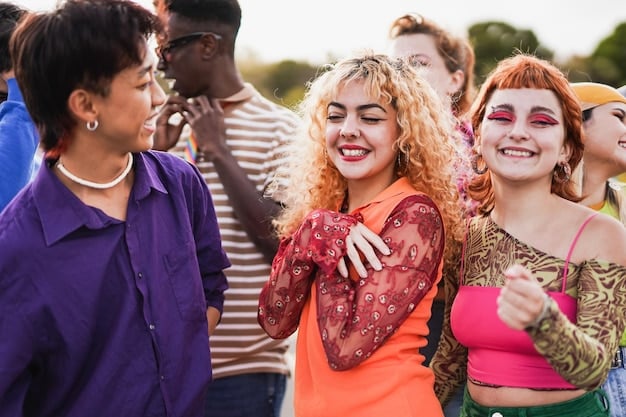
The collective spirit extends to charitable initiatives and advocacy within the community. Cosplayers often participate in outreach programs, visiting hospitals or community events in costume to bring joy to children, demonstrating the positive impact of their passion. This generous spirit, combined with the continuous exchange of knowledge and appreciation, cements cosplay as a dynamic, supportive, and globally influential cultural force, truly transforming individual passion into shared performance and community.
Challenges and Rewards: The Cosplayer’s Journey
The journey of a cosplayer is fraught with both significant challenges and immense rewards. It is a path that demands dedication, resilience, and a perpetual willingness to learn and adapt. Understanding these aspects provides a fuller appreciation for the commitment involved in transforming passion into performance.
One of the foremost challenges is the financial investment. Creating high-quality costumes often requires expensive materials, specialized tools, and considerable time commitment. Many cosplayers operate on strict budgets, finding innovative ways to source materials or repurpose existing items, which itself becomes a creative challenge. The time investment is equally demanding, with complex costumes often taking hundreds of hours to complete, often balanced alongside full-time jobs or academic pursuits.
Overcoming Creative Hurdles and Physical Demands
Creative hurdles are constant companions. Translating a two-dimensional design into a wearable, functional costume can be incredibly difficult, requiring problem-solving skills, patience, and a willingness to iterate. Furthermore, wearing elaborate costumes can be physically demanding, especially those with heavy props, restrictive elements, or extensive makeup, making convention attendance a test of endurance.
- 💰 **Budget Management:** Balancing artistic ambitions with financial realities is a perpetual challenge.
- ⏰ **Time Commitment:** Complex projects can consume numerous hours, requiring meticulous planning.
- 💪 **Physical Endurance:** Wearing elaborate costumes for extended periods at conventions can be tiring and uncomfortable.
Despite these challenges, the rewards are profoundly fulfilling. The primary gratification comes from seeing a vision come to life, from the initial concept to the finished, wearable costume. The applause, appreciation, and recognition from fellow fans and the broader community provide powerful validation for the effort expended. Many cosplayers describe a unique sense of accomplishment and pride when their meticulously crafted costume is recognized and praised.
Beyond personal satisfaction, cosplay offers opportunities for personal growth. It fosters skill development in areas like sewing, sculpting, makeup artistry, and photography. It builds confidence through public performance and interaction, and it nurtures a strong sense of community and belonging. The connections forged with other cosplayers, the shared experiences, and the mutual support create an invaluable network. Ultimately, the challenges are often seen as part of the creative process, making the eventual triumph and the joy of shared passion even more rewarding.
The Future of Cosplay: Innovation and Inclusivity
The future of cosplay appears bright, characterized by continuous innovation and a growing emphasis on inclusivity. As technology advances and societal norms evolve, so too does the landscape of this dynamic art form, promising new avenues for creativity and broader participation. This forward trajectory points towards exciting developments in both how costumes are made and who engages in the hobby.
Technological innovation is undoubtedly shaping the next generation of cosplay. The increasing accessibility of 3D printing, laser cutting, and advanced digital design software is revolutionizing costume construction. These tools allow for unprecedented levels of detail and accuracy in props and armor, previously only achievable through highly specialized and costly means. Expect to see more integrated electronics, animatronics, and LED lighting, bringing costumes to life in increasingly sophisticated ways.
Sustainability and Ethical Practices
There’s a growing awareness within the community about sustainability and ethical practices. Cosplayers are exploring eco-friendly materials, upcycling existing items, and adopting more sustainable fabrication methods to reduce their environmental footprint. This shift towards responsible creation is likely to become a more prominent trend, influencing design choices and material sourcing.
- 🤖 **Advanced Technology:** 3D printing and digital design will continue to streamline complex costume creation.
- 🌱 **Eco-Conscious Practises:** A greater focus on sustainable materials and ethical crafting methods.
- 🤝 **Accessibility:** Efforts to make cosplay more accessible to individuals with varying abilities and backgrounds.
Inclusivity remains a crucial area of growth. The community is actively striving to become more welcoming to diverse body types, ethnicities, and gender identities. This involves challenging traditional beauty standards, promoting body positivity, and celebrating a wider range of character portrayals. Efforts to make conventions and events more accessible for individuals with disabilities are also gaining momentum, ensuring that everyone can participate and enjoy the magic of cosplay.
The proliferation of online platforms and virtual conventions means that cosplay can reach an even wider global audience, fostering connections beyond physical gatherings. This digital expansion will likely lead to new forms of collaborative storytelling and performance. Ultimately, the future of cosplay promises to be an exciting blend of technological innovation, environmental consciousness, and a deep commitment to fostering a truly inclusive and vibrant community where passion can transform into performance for everyone.
Beyond the Seams: The Cultural and Economic Impact of Cosplay
Cosplay’s influence stretches far beyond the seams of a costume, making a significant cultural and economic impact globally. What began as a fan activity has blossomed into a thriving industry, stimulating economies and shaping popular culture in surprising ways. Understanding this broader context reveals the true depth of its reach.
Culturally, cosplay acts as a powerful bridge between creators and consumers of popular media. It demonstrates the profound connection fans have with fictional worlds, bringing characters from screens and pages into tangible reality. This engagement deepens fan loyalty and often drives consumption of the original media, creating a symbiotic relationship. When a costume resonates, it reinforces the appeal of the character and their story.
Economic Footprint and Industry Growth
Economically, cosplay is no small player. The industry encompasses a wide array of sectors, from specialized fabric and material suppliers to professional prop makers, wig stylists, and photographers. Convention circuits, both large and small, generate substantial revenue through ticket sales, vendor booths, accommodation, and local tourism. This creates jobs and economic opportunities both directly and indirectly.
- 🛍️ **Retail & Materials:** A significant market for specialized fabrics, tools, and crafting supplies.
- 📸 **Photography & Services:** Drives demand for skilled photographers, makeup artists, and event organizers.
- 📈 **Tourism:** Boosts local economies around convention venues through attendee spending.
The rise of professional cosplayers has further professionalized aspects of the hobby. Many popular cosplayers earn income through sponsorships, appearances, merchandise sales, and patreon subscriptions, transforming their passion into viable careers. This creates a new tier within the entertainment industry, where individual artists can leverage their creativity and craftsmanship into substantial financial success, influencing trends and inspiring others.
Moreover, major media franchises increasingly recognize and leverage the power of cosplay. They often feature cosplayers in their promotional materials, sponsor cosplay competitions, and even incorporate fan-created designs into official merchandise. This acknowledgment validates the art form and integrates it more deeply into mainstream marketing strategies. Cosplay, therefore, is not merely a hobby; it is a cultural force that continually redefines fan engagement, generates substantial economic activity, and profoundly influences the entertainment landscape, proving that passion can indeed be a powerful performance engine.
| Key Aspect | Brief Description |
|---|---|
| 🧵 Craftsmanship | Meticulous creation of costumes, props, and wigs from various materials. |
| 🎭 Performance | Embodying a character’s mannerisms, voice, and spirit on stage or at conventions. |
| 🤝 Community | A global network of enthusiasts sharing passion, support, and skill. |
| 💡 Innovation | Utilizing new technologies and sustainable practices to push cosplay boundaries. |
Frequently Asked Questions about Cosplay
▼
Cosplayers use a wide array of materials. Common choices include various fabrics like cotton, silk, and brocade for garments, EVA foam and thermoplastics (e.g., Worbla) for armor and props, and a range of paints, glues, and adhesives for finishing touches. Wigs and theatrical makeup are also essential components.
▼
The balance between accuracy and comfort is a personal choice for each cosplayer. Some prioritize strict accuracy, even if it means sacrificing comfort, especially for competitions. Others prefer more comfortable, reimagined versions of costumes for prolonged wear at conventions. It often depends on the event and the cosplayer’s goals.
▼
Absolutely not. While many cosplayers choose popular characters from anime, movies, or video games, the art form also embraces original character designs (OCs), fan art interpretations, and even historical or literary figures. The essence of cosplay is creative expression and transformation, regardless of the character’s mainstream recognition.
▼
Cosplayers are largely self-taught, learning through various resources. Online tutorials, YouTube videos, specialized crafting blogs, and workshops at conventions are invaluable. Many also learn by experimenting with materials, collaborating with experienced cosplayers, and sharing knowledge within the supportive global cosplay community.
▼
For beginners, it’s recommended to start with a simpler character costume that you genuinely love. Focus on one or two new skills rather than trying to master everything at once. Utilize online tutorials, be patient with yourself, and remember that the most important aspect is to have fun and enjoy the creative process.
Conclusion
The Art of Cosplay: Transforming Passion into Performance stands as a testament to human creativity, dedication, and the profound connection we forge with fictional worlds. It blends intricate craftsmanship, compelling character portrayal, and a vibrant global community into an art form that continually inspires and evolves. From humble beginnings to a significant cultural and economic force, cosplay empowers individuals to transcend everyday life, embodying their passions in a tangible and celebrated manner. It is a journey of continuous learning, artistic challenge, and deeply rewarding self-expression, fostering a truly unique space where imagination knows no bounds.
